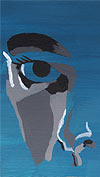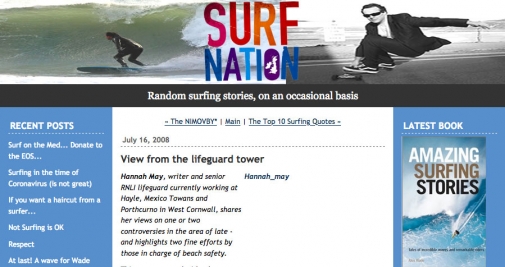

View From The Lifeguard Tower
This season started with a bang. Just a month into this year’s beach stint and our induction training has been put to the test with two critical recues, with guards from Gwithian and Sennen Cove demonstrating their stellar worth to the masses.
At Gwithian, swell with a high spring tide smashed a surfer into a cave on the north coast prompting a rescue which, if unsuccessful, would almost certainly have proven lethal for the casualty and, potentially, the lifeguards involved. Let’s just say the ditched board had seen better days, hammered, as it was, into about two dozen splintered pieces in the space of several hours. A jubilant save, so where’s the catch? Well, it comes off the back of a few moans concerning the need and use of rescue watercraft (RWCs, or jet skis) on our beaches – probably the only possible medium of rescue in this very testing instance.
Almost everyone will sympathise with those who object to people hiring and driving jet skis with a gung ho attitude and rule-flouting flagrancy, but when members of the public dismiss outright our charitable service’s operational craft (and fully trained drivers), basing their views on apparent inconveniences regarding noise pollution, they should perhaps consider the flipside of the coin.
After all, how different are our RWCs to the Police, Fire and Ambulance services’ modes of transport – with their sirens and speedy right of ways? We’re a frontline emergency service, alongside all of the others. Like them, we are only equipped with the machinery necessary for us to undertake our job, yet still struggle to transcend negative public perceptions condemning us as power crazed surf bums every time the buzz of an engine sounds across ocean or beach stretch.
Having said that, our publicly accepted persona and general reception is definitely improving, and many lifeguards can cite an array of appreciative comments already this season. No wonder, if people pause to consider the recent drama at Sennen Cove.
Then, within minutes of being alerted to an unconscious casualty on the beach, the lifeguard team collaborated to administer CPR and defibrillation. The casualty was promptly hospitalised – and survived. Over nine thousand people were assisted by RNLI Lifeguards last year, in situations that may not have been as dramatic but which, for those needing help, may have seemed just as perilous.
On the outside, lifeguards seem to have a life of Reilly. We’re on the beach and in the water, leading active lives and dealing with people. But it’s not as straightforward as that. Complains from the public are one thing, but our work is inherently unpredictable – and when death squares up to you, all of a sudden beach life isn’t so scenic. There’s an urgency - of life itself – which requires immediate, instinctive action. In both the Gwithian and Sennen Cove incidents, the lifeguards in Penwith expertly fulfilled their roles.
As the season heats up there are sure to be further tests. Prevention is our primary role but reacting to the moment’s spur is another - lives depend on our very presence. Those who criticise our use of RWCs might care to ask themselves this: if they, or a loved one, ever needed rescuing, wouldn’t they rather we knew how to handle a fast and efficient piece of equipment, enabling us better to do our jobs?